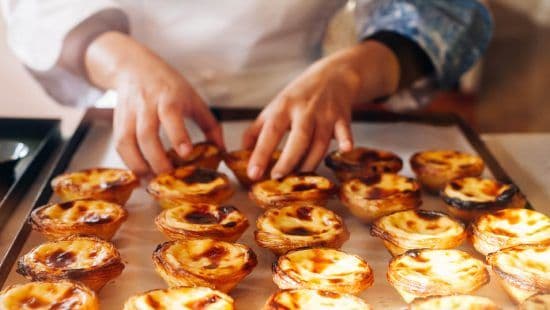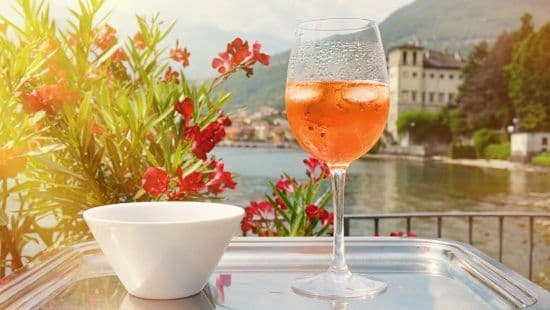One aspect that is almost ubiquitous to the human experience is a love of coffee. From the Sahara Desert, through to the Ethiopian Highlands, to the bustling city streets of Hong Kong, one little bean has the power to bring people together, inspire creativity, and perk people up. How each culture prepares and flavours their daily cup of Joe is almost as varied as the languages they speak and is just as exciting to explore. From adding egg yolks or ground pepper to fresh roasting green coffee beans over an open fire, here are 10 unique ways people around the world enjoy their Java.
1. Egg Coffee – Vietnam
This smooth and unusual drink was born of necessity. In Hanoi during the Vietnam war eggs were used to replace dairy which was in short supply. Today it is served in coffee shops throughout the country, placed atop a small candle to keep warm during a leisurely afternoon of people watching and snacking on Bánh Xoai (mango sweet cakes). The silkiness of the eggs along with the sweetness of the sugar and condensed milk does an excellent job of reducing the natural bitterness of the Robusta coffee and creates a creamy foam on the surface. Use the teaspoon provided to dig deep and savour every drop.

2. Türk Kahvesi – Turkey
Tradition is not in short supply when preparing a cezve full of Turkish coffee (Türk Kahvesi). It starts with powder-fine, hand-ground coffee (Arabica, Robusta, or blended varieties). The powder is then added to water and sugar inside the copper cezve (also known as an ibrik elsewhere) and boiled over a heat source, such as hot sand. The cezve is removed from the heat when the coffee begins to froth, is cooled down, and then heated to froth twice more before serving in small porcelain cups called kahve finjanı. The person enjoying this aromatic wonder adds more sugar to taste (but never milk or cream) and waits for the grinds to settle to the bottom of the cup before enjoying (since Turkish coffee is not filtered). As for flavour, the Turkish proverb proves true: “coffee should be black as hell, strong as death, and sweet as love”.

3. Espresso Romano — Italy
When you think Italian coffee you can probably name half a dozen delectable beverages, from the smooth Cafe Latte to a sweet Cappuccino. One that might not immediately come to mind is the fresh and creative Espresso Romano. For this beverage, you prepare a standard short espresso and garnish with a small slice of lemon or zest from the peel. Added to the java by the drinker, it is said to bring out the natural sweetness of the bean, in addition to a nice pop of colour to your table in the piazza.

4. “Sock” Coffee – Columbia
Keeping with the traditions practiced before paper filters were invented, a common brewing method in Columbia involves dunking coffee grounds in a cloth filter resembling a sock, into a pot of water that is kept on the back burner of a stove and reheated throughout the day, or in a large electric percolator. The result is a thicker, stronger brew, thanks to the courser grounds that best suit the cloth filter.

5. Spiced Coffee — Morocco
In case Moroccan cuisine wasn’t already spicy, they have come up with a cup of coffee that mixes everything you would find at a souk spice stall into a fragrant, flavourful, and less bitter coffee. Before brewing the coffee (or even before grinding if possible) add in cinnamon, ginger, cardamom, kosher salt, ground clove, black pepper, and freshly grated nutmeg. Once brewed add cream and sugar to taste keeping in mind the spices tone down the coffee’s natural bitterness so you may need less than normal. If tea is not your fancy this may be a better choice for sunset or stargazing in the Sahara.

6. South Indian Filter Coffee – India
Warm, rich and a relaxing ritual, coffee in Southern India is commonly enjoyed during afternoons at home because the process of steeping the concentrate can take upwards of an hour. Coffee powder is added to boiling water in the top chamber of a pressurized metal coffee filter, and then it slowly steeps as it falls through to the bottom chamber. Once the concentrate is produced, it is combined with velvety warm milk and sugar, before being frothed by pouring the mixture back and forth between two pots. By the time it is poured into a small cup and is enjoyed, it has an inviting pillow of foam on top that tastes as delectable as a meringue or sponge cake.

7. Yuanyang — Malaysia & Hong Kong
For those who have difficulty choosing between coffee and tea, this drink is a happy compromise. Combining 3 parts black drip coffee with 7 parts milk tea and served in standard drinkware, this drink is, earthy, smooth, and comfortably caffeinated. Whether served warm or cold, it is sure to be enjoyed..

8. Wiener Mélange — Austria
Also known as the Viennese Blend, this Austrian favourite is silky smooth and great for dunking strudel or a crescent cookie. The base recipe involves topping two shots of espresso with steamed and frothed milk (much like a latte). Other variants make it even richer by adding egg yolks and brown sugar, or topping it with whipped cream and chocolate shavings.

9. Café Con Miel – Spain
Long before modern-day concoctions, the Spanish had figured out a simple way of adding spices and sweetness to coffee that is remarkably simple to prepare, but full of familiar flavours (and makes a great after-dinner drink). Simply add whole milk, honey, vanilla extract, cinnamon, and a dash of nutmeg to coffee, warm it back up on the stove, and enjoy.

9. The Coffee Ceremony – Ethiopia
While the coffee made during a coffee ceremony in the beverage’s birthplace of lacks many of the frills and ingredients of a more modern cup of Joe, what makes this coffee so unique is the full sensory experienced involved in preparing it, and how incomparably fresh it is. When hosting a coffee ceremony, the host will start by roasting green coffee beans in a flat pan over a small charcoal stove for several hours. During this time, the intoxicating aromas of the coffee roasting will fill the air until the beans turn black and are coated in their own oils. At this point, they are ground by hand with a traditional mortar and pestle, stirred into the black clay coffee pot known as a jebena, and strained several times through a fine sieve.
Everyone of all generations gather and are served this impressive elixir by the host, who pours it into small cups in one uninterrupted stream from a metre above. To conclude guests enjoy the magical brew with optional sugar or salt, as well as with snacks of popcorn, peanuts, or cooked barley. A spectacle that brings everyone together to take a beat and connect over their shared love of coffee.





